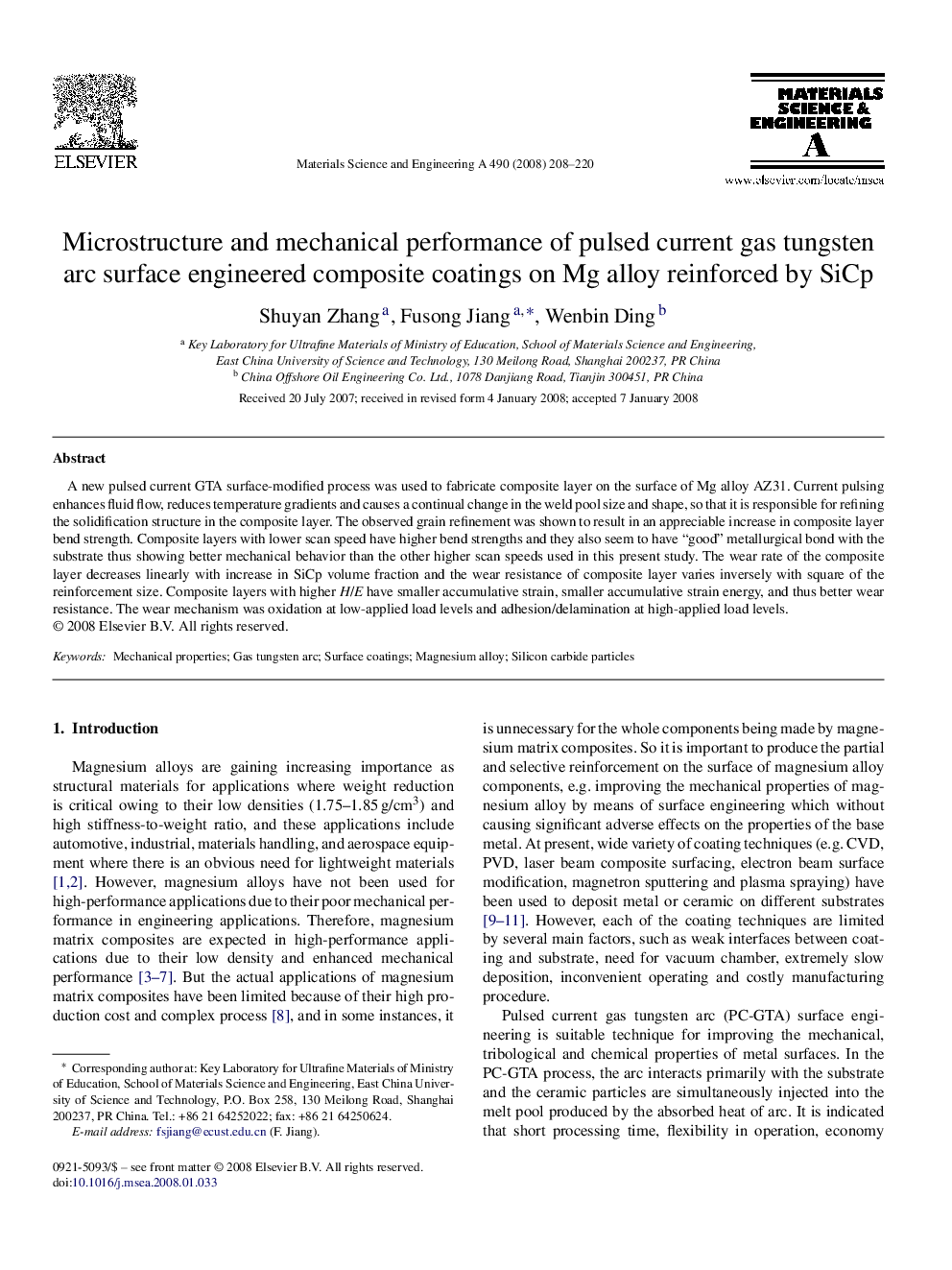| Article ID | Journal | Published Year | Pages | File Type |
|---|---|---|---|---|
| 1581354 | Materials Science and Engineering: A | 2008 | 13 Pages |
A new pulsed current GTA surface-modified process was used to fabricate composite layer on the surface of Mg alloy AZ31. Current pulsing enhances fluid flow, reduces temperature gradients and causes a continual change in the weld pool size and shape, so that it is responsible for refining the solidification structure in the composite layer. The observed grain refinement was shown to result in an appreciable increase in composite layer bend strength. Composite layers with lower scan speed have higher bend strengths and they also seem to have “good” metallurgical bond with the substrate thus showing better mechanical behavior than the other higher scan speeds used in this present study. The wear rate of the composite layer decreases linearly with increase in SiCp volume fraction and the wear resistance of composite layer varies inversely with square of the reinforcement size. Composite layers with higher H/E have smaller accumulative strain, smaller accumulative strain energy, and thus better wear resistance. The wear mechanism was oxidation at low-applied load levels and adhesion/delamination at high-applied load levels.
